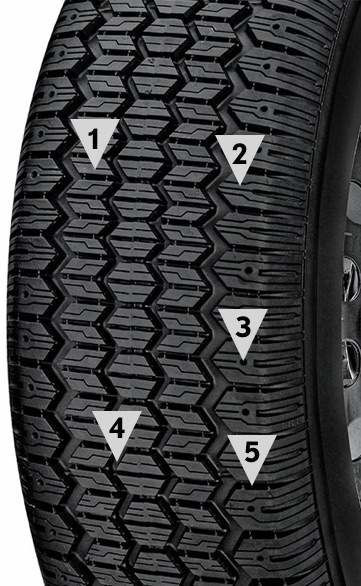Select a province & language
Entrance to this website assumes you have read and agree to these Legal Terms and Conditions and the privacy policy.
Entrance to this website assumes you have read and agree to these Legal Terms and Conditions and the privacy policy.

The tread on a tire can tell you a lot about what kind of tire it is and how it is likely to perform in various conditions.

The U.S. Department of Transportation markings signify that the tire meets DOT tire-safety standards. The DOT markings help track the tire in the same way a lot number tracks a food product.